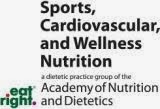Whey Protein for the Athlete
If you have ever trained for a half-marathon, full-marathon or any other type of high-exertion event you know how hard it may be to get in the nutrition you need to stay at peak performance. We’ve all heard about Michael Phelps and his 12,000 calorie diet required while training. Since you aren’t necessarily an Olympic athlete you most likely don’t need quite that many calories. However, while training your calorie, protein and carbohydrate needs do increase. And to avoid feeling like you are only either eating, training or sleeping, you need good ideas for calorie dense meals/snacks that are also healthy.
Whey protein can help with that. It is a high-quality dairy protein that contains all the essential amino acids your body needs. It helps to rebuild those muscle fibers you are breaking down when your activity level is high and is best consumed right after exercise. It is also one of the best sources of naturally-occurring branched-chain amino acids (BCAA), specifically leucine, which has been shown to independently stimulate muscle protein synthesis.
The recommended daily protein intake for the average person is 0.75 grams per kilogram body weight. However, the International Society of Sports Nutrition (ISSN) recommends that endurance athletes aim for 1 – 1.6 grams protein per kilogram body weight on high intensity exercise days. Strength and power athletes should aim even higher at 1.6 – 2 grams of protein per kilogram body weight. To figure your needs, take your weight in pounds and divide it by 2.2 to get to kilograms. Now multiply that number by the recommended grams of protein per kilogram depending on your activity level.
To get the most out of your whey protein check out this perfect smoothie formula brought to you by The No Meat Athlete.
The Perfect Smoothie Formula
(makes 2 smoothies)
· 1 soft fruit
· 2 small handfuls frozen or fresh fruit
· 2-4 tablespoons protein powder
· 2 tablespoons binder
· 1.5 tablespoons oil
· 1.5 cups liquid
· 1 tablespoon sweetener (optional, less or more as needed)
· optional superfoods, greens, and other ingredients
· 6 ice cubes (omit if soft fruit is frozen)
Select one or more ingredients of each type below and add to blender in specified proportions. Blend until smooth.
Recommended Soft Fruits
|
· Banana
· Avocado
|
Recommended Frozen or Fresh Fruits
|
· Strawberries
· Blueberries
· Blackberries
· Raspberries
· Peaches
· Mango
· Pineapple
|
Recommended Protein Powders
|
Whey
Soy
Hemp
|
Recommended Binders
|
· Ground flaxseed
· Almond butter or any nut butter
· Soaked raw almonds (soak for several hours and rinse before using)
· Rolled oats, whole or ground
|
Recommended Oils
|
· Flaxseed oil
· Hemp oil
· Coconut oil
· Almond, macadamia, or other nut oil
|
Recommended Liquids (unsweetened)
|
· Water
· Almond milk or other nut milk
· Hemp milk
Brewed tea
|
Recommended Sweeteners
|
Honey
Stevia
Coconut Nectar
|
Optional Superfoods, Greens and Other Ingredients
|
· Cacao nibs (1-2 tablespoons)
· Carob chips (1-2 tablespoons)
· Ground organic cinnamon (1-2 teaspoons)
· Chia seeds, whole or ground (1-2 tablespoons)
· Greens powder (1-2 teaspoons)
· Whole spinach leaves (1-2 handfuls)
· Maca powder (1-2 teaspoons)
· Jalapeno pepper, seeds and stem removed (one small pepper)
· Ground cayenne pepper (small pinch)
· Sea salt (pinch)
Lemon or lime juice (1 tablespoon
|
Lindsay was awarded her bachelor’s degree in nutrition and food science with a dietetic specialization from South Dakota State University. She completed an internship program at the University of Nebraska Medical Center and experienced many areas of dietetics including intensive care, solid organ transplant, weight loss and management, and long-term care. She is an active member of the Academy of Nutrition and Dietetics (formerly the American Dietetic Association).
Lindsay believes practicing healthy nutritional habits and having an active lifestyle are an integral part of living a long, happy life. She enjoys her position as a Hy-Vee dietitian working directly with the public and educating them about a healthy lifestyle and finding ways to integrate good nutritional habits into their lives.
Lindsay believes practicing healthy nutritional habits and having an active lifestyle are an integral part of living a long, happy life. She enjoys her position as a Hy-Vee dietitian working directly with the public and educating them about a healthy lifestyle and finding ways to integrate good nutritional habits into their lives.
Blog page: http://hyveehealthstateofmind.wordpress.com/.
Twitter page www.twitter.com/lindsaylannanrd.

